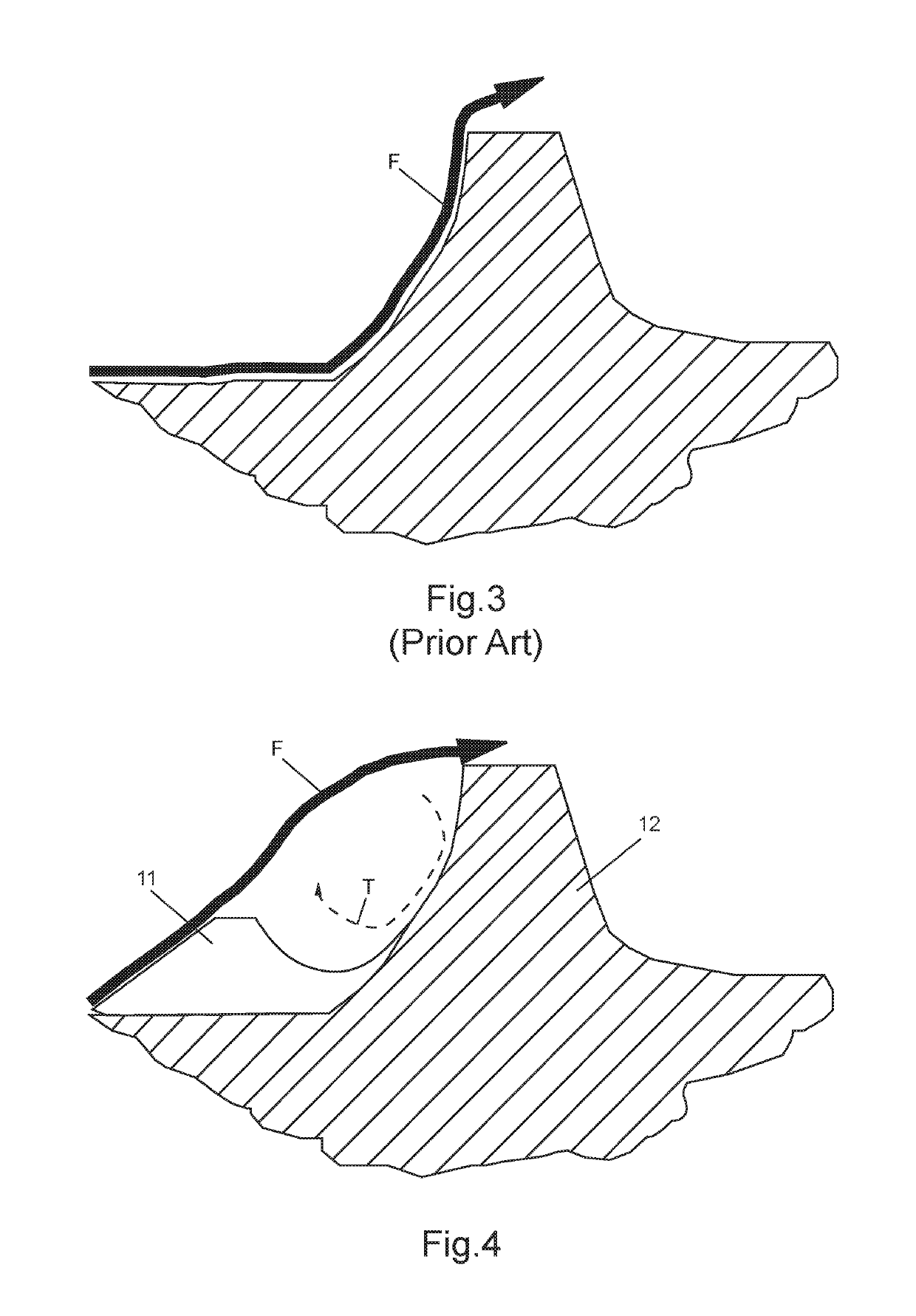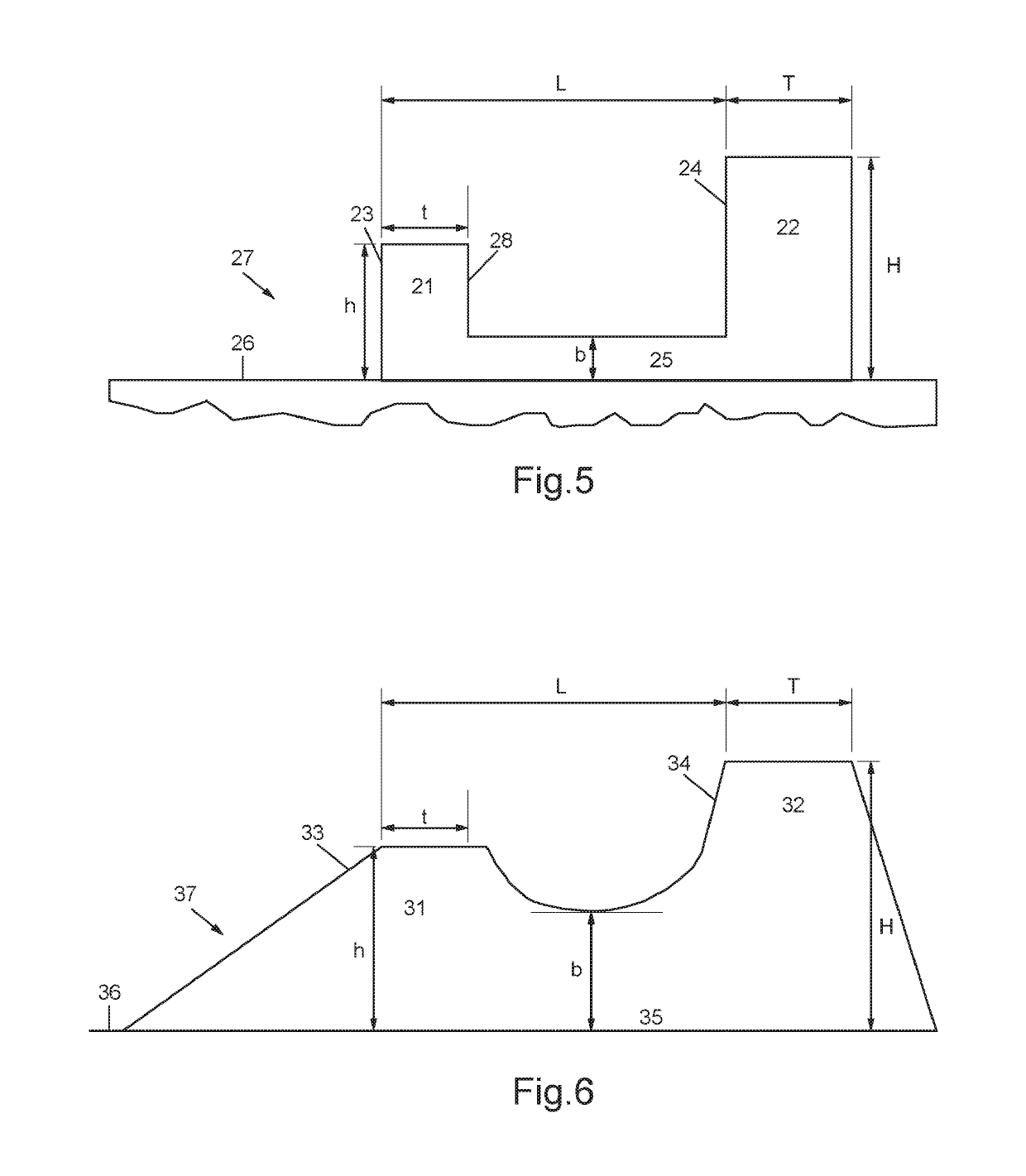Refiner plate segment with pre-dam
a technology of pre-dam and refiner plate, which is applied in the field of refiner plate, can solve the problems achieve the effects of reducing energy consumption, less wear, and longer useful li
- Summary
- Abstract
- Description
- Claims
- Application Information
AI Technical Summary
Benefits of technology
Problems solved by technology
Method used
Image
Examples
Embodiment Construction
[0015]Below, the general shape and design of a refiner plate and a refiner plate segment according to the invention will first be explained with reference to FIG. 1 and FIG. 2; thereafter the advantages achieved over the prior art with such a refiner plate and refiner plate segment will be demonstrated with reference to FIG. 3 and FIG. 4, respectively; while specific ranges of dimensions for a first embodiment and a second embodiment of the invention will be presented with reference to FIG. 5 and FIG. 6, respectively.
[0016]FIG. 1 illustrates schematically a section of a refiner plate 1 according to the present invention. The refiner plate 1 comprises a number of segments 2, of which at least one segment 2 is provided with at least two bars, i.e. a first bar 3 and a second bar 4, as is best seen in the enlarged view of FIG. 2. The first bar 3 and the second bar 4 extend in a generally radial direction from the center of the refiner plate 1. As used herein, the term “generally radial ...
PUM
| Property | Measurement | Unit |
|---|---|---|
| height | aaaaa | aaaaa |
| thickness | aaaaa | aaaaa |
| centrifugal forces | aaaaa | aaaaa |
Abstract
Description
Claims
Application Information
 Login to View More
Login to View More - R&D
- Intellectual Property
- Life Sciences
- Materials
- Tech Scout
- Unparalleled Data Quality
- Higher Quality Content
- 60% Fewer Hallucinations
Browse by: Latest US Patents, China's latest patents, Technical Efficacy Thesaurus, Application Domain, Technology Topic, Popular Technical Reports.
© 2025 PatSnap. All rights reserved.Legal|Privacy policy|Modern Slavery Act Transparency Statement|Sitemap|About US| Contact US: help@patsnap.com



